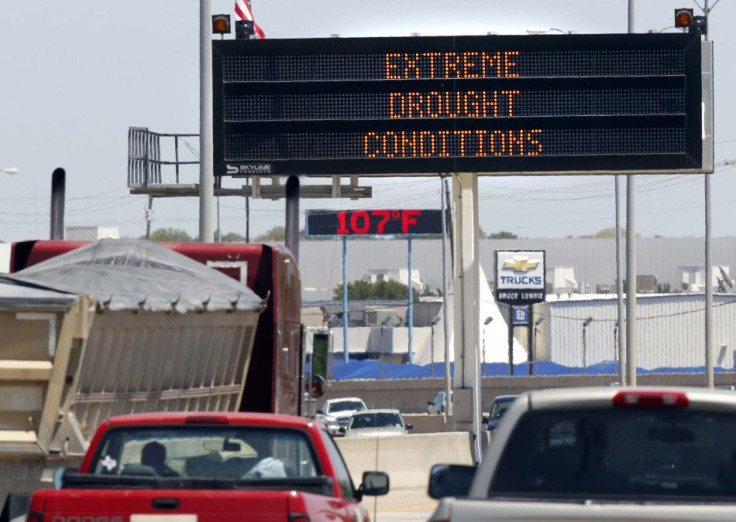Hurricane Irene Path Won’t Help Severe Drought in Midwest

Prolonged periods of heavy rain from the path of Hurricane Irene will do little to alleviate severe drought conditions that have plagued the nation's midsection throughout the spring and summer, meteorologists say.
Not since the 1930s - the period of the Dustbowl on the Great Plains - has a drought affected so much of America's breadbasket. An economist with Doane Advisory Services in St. Louis, Dan Manternach, told Bloomberg News that output of red winter wheat, the most common type in America, is down 22 percent from last year. A continuation of drought conditions into the fall could mean that next year's wheat output is even smaller, he said.
Satellite images of the American Midwest show just how brown and barren the nation's farm belt has become this year. Total agricultural losses for Texas this year are valued as high as $5.2 billion, according to a report in Bloomberg News.
Analysts say that the weak dollar has put an additional strain on agricultural commodities prices. Any hope that precipitation from Hurricane Irene would move westward and inland was dashed today as meteorologists updated their predictions for the storm's path, which now looks to be making landfall at Ocracoke Island on North Carolina's Outter Banks.
Even if rains from Irene were to hit parts of the Midwest that have suffered from severe droughts this summer, the water wouldn't do the parched soil much good. Experts say that rain from hurricanes often has an unusually high saline content that can damage crops, trees, and other vegetation.
© Copyright IBTimes 2025. All rights reserved.





















